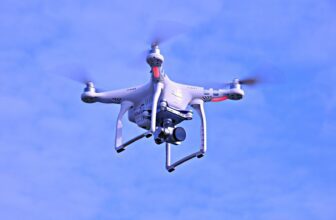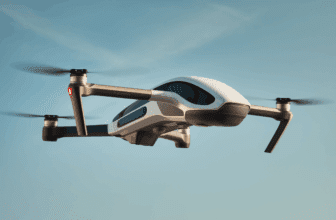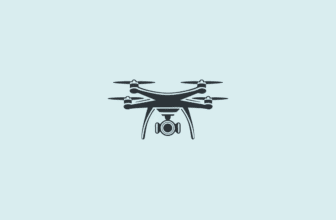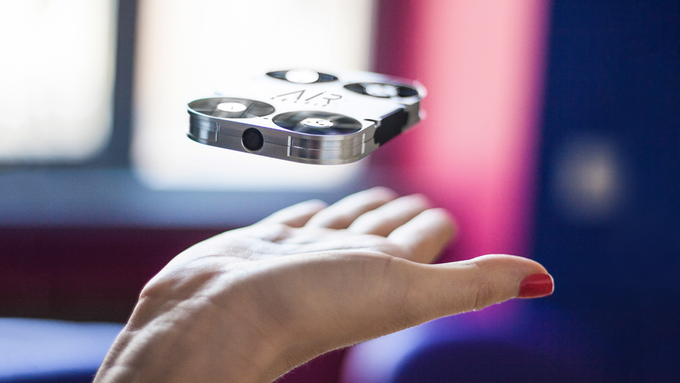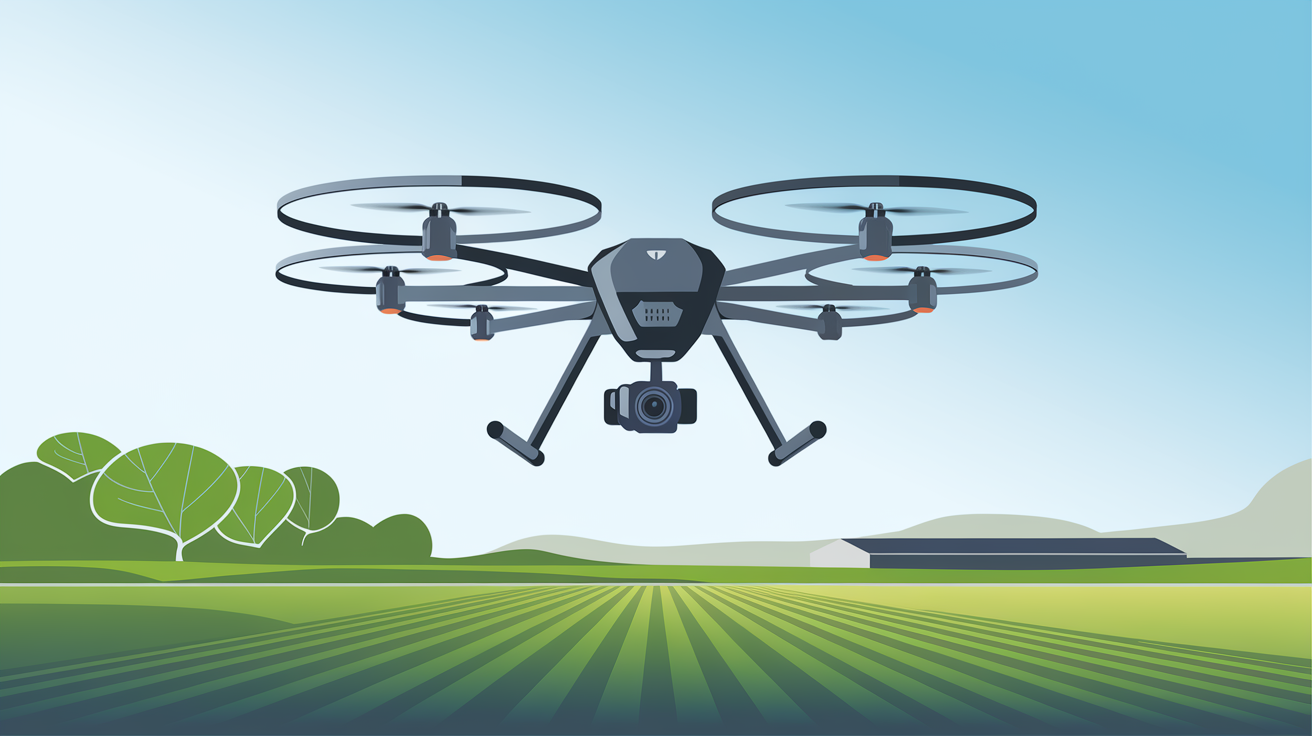
In today’s agriculture, drones have emerged as game-changing tools for modern farmers. Traditional farming methods increasingly struggle to meet global food demands while maintaining sustainability and efficiency. Precision agriculture, powered by advanced drone technology, offers a compelling solution to these challenges. In this article about drones in agriculture, we explore the benefits and future of these technologies. As of 2025, agricultural drones have transformed farming operations worldwide, enabling unprecedented resource optimization, crop monitoring capabilities, and environmental benefits. Leading agricultural organizations and research institutions have documented significant improvements in yield, reduced input costs, and enhanced sustainability through drone implementation, signaling a new era in smart farming practices.
How Drone Technology Is Changing Agricultural Practices
The integration of drone technology in agriculture has accelerated dramatically in recent years, with innovations that extend far beyond simple aerial photography. Today’s agricultural drones represent sophisticated data-gathering platforms that provide farmers with actionable insights previously impossible to obtain.
Breakthrough Developments in Farm Drone Technology
Various types of drones in agriculture are being utilized to meet different farming needs. These include:
- Fixed-wing drones: Ideal for covering large areas quickly, offering long flight times and efficient mapping capabilities.
- Multirotor drones: Offering excellent maneuverability and hovering abilities, perfect for detailed inspections and precision tasks like spraying.
- Hybrid VTOL drones: Combining the benefits of fixed-wing and multirotor drones, capable of vertical takeoff and landing with extended flight ranges.
The best drones in agriculture often integrate these features, providing versatility and high performance to meet diverse agricultural applications. Other breakthrough developments include enhanced flight capabilities, automated navigation systems, and advanced sensor integration. Real-time data transmission capabilities and weather-resistant designs extend usability throughout growing seasons.
Measurable Impacts on Farm Productivity and Efficiency
Research published in the Journal of Agronomy demonstrates that drone-assisted farming operations can achieve a 20-30% reduction in fertilizer usage, a 30-50% decrease in pesticide application, and a 15-25% increase in overall crop yields.
Real-world case studies support these findings. A 1,200-acre corn operation in Iowa implemented drone-based monitoring and reported a 22% increase in yield alongside a 35% reduction in nitrogen application over three growing seasons.
Precision Crop Monitoring and Health Management
One of the most valuable applications of agricultural drones involves comprehensive crop monitoring capabilities that allow farmers to detect and address issues before they impact yield.
Next-Generation Crop Surveillance Systems
Modern agricultural drones employ sophisticated imaging technologies that reveal crop conditions invisible to the naked eye:
- Multispectral imaging: Captures light reflection across multiple wavelengths to identify stress, disease, and nutrient deficiencies.
- Thermal sensors: Detect temperature variations indicating irrigation issues or pest infestations.
- RGB high-resolution cameras: Provide visual confirmation of problem areas.
Maximizing Yields Through Early Detection and Response
The practical benefits of drone-based monitoring translate directly to improved crop outcomes:
| Monitoring Capability | Early Detection Window | Potential Yield Impact |
| Disease detection | 4-10 days before visual symptoms | 15-30% yield preservation |
| Nutrient deficiency | 7-14 days before visible stress | 10-20% yield improvement |
| Water stress | 3-5 days before wilting | 15-25% yield preservation |
| Pest infestation | 5-12 days before visible damage | 20-40% yield preservation |
A vineyard in California’s Napa Valley implemented weekly drone monitoring and identified a powdery mildew outbreak nine days before it would have been visible to workers. Targeted treatment preserved an estimated $240,000 in grape value across 40 acres. As someone who’s spent years working with agricultural technology, I’ve seen firsthand how early detection can save crops and, frankly, a lot of dollars.
Optimization of Agricultural Resource Management
Precision resource management represents one of the most significant economic and environmental benefits of agricultural drone technology.
Data-Driven Field Mapping and Analysis
Advanced drone systems create highly detailed field maps that reveal crucial information, including elevation and drainage patterns, soil composition variations, plant population counts, and growth stage monitoring.
These mapping capabilities allow for variable-rate application of inputs, ensuring resources are applied precisely where needed rather than uniformly across fields.
Documented Water and Fertilizer Reduction
The resource-saving potential of drone-guided precision agriculture is substantial: studies show a 20-30% reduction in irrigation water usage through drone-identified moisture maps, while field trials demonstrate a 15-35% fertilizer reduction without yield loss.
A 500-acre rice operation in California implemented drone-based irrigation monitoring and reduced water usage by 27% while maintaining yield targets, saving approximately $45,000 in water costs during a single growing season. As a tech enthusiast in the agriculture sector, I’ve witnessed how these drones make farmers’ lives easier by pinpointing exactly where resources are needed.
Understanding Agricultural Drone Costs and Investment
Implementing drone technology in farming requires careful consideration of various cost factors to determine return on investment.
Initial Investment and Equipment Costs
The upfront costs for agricultural drones vary significantly based on capabilities and intended use:
- Entry-level agricultural drones: $500–$2,000
- Professional-grade systems: $3,000–$15,000
- High-end platforms: $10,000–$200,000
A typical professional agricultural drone setup includes:
- Base drone platform: $5,000–$15,000
- Multispectral or thermal cameras: $2,000–$6,000
- RTK GPS for precision mapping: $1,500–$3,000
- Software licenses: $500–$2,500 annually
Operational and Maintenance Expenses
Beyond initial purchase, farmers must budget for ongoing costs:
- Fuel/battery expenses: $1,000–$3,000 annually
- Data processing and analytics: $2,000–$5,000 annually
- Insurance coverage: $2,000–$10,000 annually
- Maintenance and repairs: 5–10% of drone fleet value annually
Training and Personnel Requirements
Effective drone implementation requires investment in human resources:
- Pilot training and certification: $500–$2,000 per operator
- Data analysis training: $1,000–$3,000 per analyst
- Ongoing professional development: $1,000–$5,000 annually
For large operations, dedicated drone specialists may command salaries of $40,000–$80,000 annually. Having shelled out more than a few bucks on tech gear myself, I can attest that while the initial sticker shock may make you spill your coffee, the long-term gains often justify the investment.
Leading Agricultural Drone Manufacturers and Their Products
DJI Agricultural Solutions
Headquarters: Shenzhen, China
Key Products: DJI offers high-capacity spraying and crop monitoring drones with industry-leading flight stability. The company dominates with approximately 70% of the global commercial drone market.
PrecisionHawk Agricultural Systems
Headquarters: Raleigh, North Carolina, USA
Key Products: Lancaster 5 and PrecisionAnalytics Agriculture offer advanced data analytics and seamless integration with farm management systems.
AgEagle Aerial Systems
Headquarters: Wichita, Kansas, USA
Key Products: eBee Ag and senseFly eBee X specialize in precision agriculture applications with rugged designs for farm environments and industry-leading flight times.
Parrot Professional Solutions
Headquarters: Paris, France
Key Products: ANAFI Ai and ANAFI USA offer highly portable designs and simplified workflows for agricultural users.
Innovative Seeding and Planting Applications
While less widespread than monitoring applications, drone-based planting and seeding technologies are expanding rapidly with promising results.
Emerging Drone Seeding Technologies
Several approaches to drone-based seeding are gaining traction, such as pod-based systems, pressurized planting mechanisms, and broadcast seeding. These technologies can achieve planting rates of 20–30 acres per hour, significantly faster than many traditional methods, particularly in challenging terrain.
Practical Applications in Challenging Environments
Drone seeding offers particular advantages in specific scenarios, including steep hillsides, wetland areas, post-disaster restoration, and cover crop application. Forestry operations in mountainous regions of the Pacific Northwest have utilized drone seeding to reforest 1,200 acres of steep, fire-damaged terrain, achieving 80% of the success rate of hand-planting at approximately 60% of the cost. Having seen a drone zip over a hillside planting seeds like a futuristic Johnny Appleseed, I can say it’s both impressive and a bit surreal.
Enhanced Pest Control and Fertilizer Distribution
Precision application of agricultural chemicals represents one of the most economically and environmentally significant drone applications.
Targeted Chemical Application Techniques
Modern agricultural spray drones offer several advantages over traditional methods, including ultra-low volume spraying, variable-rate application, spot treatment capability, and spray uniformity.
These capabilities typically reduce chemical usage by 30–50% compared to traditional application methods.
Documented Success in Chemical Reduction
Research and field implementations demonstrate substantial benefits, such as 20–40% reduction in chemical costs, significantly reduced chemical drift and runoff, and enhanced worker safety.
A 350-acre soybean operation in Illinois implemented drone-based spot spraying for weed control and reduced herbicide usage by 58% while maintaining effective weed management, resulting in approximately $14,000 in chemical savings. As someone who’s sprayed more than a few fields in my time, letting drones handle the chemicals is a win-win: better for the environment and fewer headaches, literally.
Advancing Livestock Management Using Drones
Beyond crop applications, drones are revolutionizing livestock management with specialized monitoring capabilities.
Advanced Livestock Monitoring Systems
Drones equipped with appropriate sensors provide numerous livestock management benefits, including herd location tracking, automated counting, behavior monitoring, and thermal assessment.
These capabilities are particularly valuable for operations managing livestock across large or remote areas where traditional monitoring is challenging.
Practical Livestock Management Improvements
The implementation of drone technology in livestock operations yields measurable benefits such as labor efficiency, early health intervention, predator deterrence, and grazing optimization.
A sheep ranch in Wyoming implemented twice-weekly drone monitoring across 5,000 acres and reported a 26% reduction in predation losses alongside early detection of a respiratory infection that prevented a widespread outbreak. I once joked with a rancher friend that his new drone was like a sheepdog with wings. He laughed and said, “Yeah, but it doesn’t eat my sandwiches when I’m not looking.”
Understanding Regulatory Requirements for Agricultural Drones
Understanding and complying with drone regulations is essential for legal agricultural drone operations.
United States Regulatory Framework
In the United States, agricultural drone operations are primarily governed by the Federal Aviation Administration (FAA). Part 107 certification is required for all commercial drone operations, along with registration requirements and operational limitations. Special waivers may be available for certain operations.
To obtain Part 107 certification, pilots must be at least 16 years old, pass an aeronautical knowledge test at an FAA-approved testing center, and complete an FAA background check.
European Union Regulations
The European Union has implemented a unified regulatory framework through the European Union Aviation Safety Agency (EASA) with various operation categories, registration requirements, training protocols, and developing “U-Space” traffic management systems.
Canadian and Australian Requirements
Canada: Regulated by Transport Canada with varying certification needs for basic or advanced operations, and compulsory registration for drones over 250g.
Australia: Governed by the Civil Aviation Safety Authority (CASA) requiring Remote Pilot License (RePL) and RPA Operator’s Certificate (ReOC) for specific operations.
Integration with Farm Management Systems
The value of agricultural drones is maximized when they’re effectively integrated with broader farm management systems.
Compatibility Considerations
When integrating drones with existing farm technologies, farmers should consider data format compatibility, API availability, cloud connectivity, and hardware requirements.
Leading Farm Management Platforms with Drone Integration
Several farm management platforms offer specialized drone integration:
- John Deere Operations Center
- Climate FieldView
- Trimble Ag Software
- Farmers Edge
Data Management and Processing
Effective drone integration requires consideration of data storage capacity, processing capabilities, data security, and historical data integration.
Data Analytics and AI Integration in Drone Agriculture
The true power of agricultural drones comes not just from data collection but from the intelligent analysis and application of that information.
Transforming Drone Data into Actionable Farm Intelligence
Modern agricultural drone systems generate enormous datasets that require sophisticated analysis, including RGB visual imagery, multispectral data, thermal readings, and elevation models.
AI-Powered Agricultural Decision Support
Artificial intelligence and machine learning dramatically enhance the value of drone-collected data through automated issue detection, predictive analytics, and prescription map generation.
A 750-acre potato operation in Idaho implemented AI-powered drone analysis and reported that the system automatically identified early blight infection with 92% accuracy, seven to ten days before symptoms were visible to farm staff. When I first heard about AI diagnosing plant diseases, I joked that soon the drones would be giving us farming advice. But hey, if it saves the potatoes, I’m all for it!
Training Requirements for Effective Drone Implementation
Successfully implementing agricultural drones requires developing various skills and knowledge sets.
Essential Skills for Agricultural Drone Operators
Effective drone operation in agriculture requires proficiency in:
- Drone piloting fundamentals
- Agricultural knowledge
- Data collection protocols
- Maintenance and troubleshooting
- Regulatory compliance
Training Resources and Programs
Several pathways exist for developing agricultural drone expertise, including manufacturer training, university extension programs, online certification courses, industry workshops, and mentorship programs.
Most operators require 20–40 hours of initial training, followed by regular practice and continued education to stay current with evolving technology and techniques.
The Ongoing Evolution of Agricultural Drones
As of 2025, agricultural drone technology continues to advance, bringing significant technological improvements and wider adoption.
Emerging Drone Technologies Transforming Farming
Several technological developments are driving agricultural drone evolution, including:
- Extended flight times
- Swarm technology
- All-weather operation
- Edge computing
- Advanced BVLOS (Beyond Visual Line of Sight) capabilities
Expanding Accessibility for Farms of All Sizes
The agricultural drone industry is actively addressing accessibility barriers with cost reductions, drone-as-a-service models, simplified user interfaces, and standardized data integration.
The increasing availability of agricultural drones, coupled with reduced prices and improved features, makes drone technology accessible to small and medium-sized operations that previously found the technology out of reach.
Agricultural Sustainability and Drones: A Critical Partnership
The environmental benefits of precision agriculture via drone technology align closely with global sustainability goals.
Documented Environmental Benefits of Drone-Assisted Farming
Research demonstrates several sustainability advantages, including:
- Reduced chemical usage
- Fertilizer optimization
- Water conservation
- Soil protection
- Carbon footprint reduction
These benefits directly support multiple UN Sustainable Development Goals related to responsible production, clean water, and climate action.
Long-Term Sustainability Outlook
Agricultural sustainability experts project significant impacts from widespread drone adoption, including resource efficiency, yield improvement, land use optimization, and climate resilience.
According to the Food and Agriculture Organization, precision agriculture technologies like drones are critical to meeting global food production needs while reducing agriculture’s environmental footprint.
Conclusion: Preparing for the Drone-Driven Agricultural Revolution
As we enter 2025, agricultural drones have fundamentally transformed farming practices worldwide. The technology has evolved from experimental to essential, offering proven benefits in efficiency, sustainability, and profitability. Forward-thinking agricultural operations are integrating these systems into their management practices, enjoying the benefits of using drones in agriculture. Continuing innovation promises to make the technology increasingly accessible to farms of all sizes.
For farmers considering drone technology adoption, the pathway forward includes evaluating specific operation needs and potential drone applications, understanding regulatory requirements in their region, exploring various ownership models, starting with focused applications that offer clear ROI, and building technical capacity through training and partnerships.
The agricultural drone revolution isn’t just coming, it’s here. By embracing these technologies, farmers can position themselves at the forefront of a more efficient, productive, and sustainable agricultural sector.
FAQs About Agricultural Drones
How are drones used in agriculture?
Drones in agriculture serve multiple functions including crop monitoring through visual, multispectral, and thermal imaging; precision application of fertilizers and pesticides; detailed field mapping for soil analysis and drainage assessment; planting in difficult terrain; livestock monitoring; and automated counting and inventory management.
What are the benefits of using drones in agriculture?
Drones offer numerous benefits in agriculture, including enhanced crop monitoring through advanced imaging capabilities, precise application of inputs leading to reduced resource usage and environmental impact, increased operational efficiency, and improved yield outcomes.
What is the future of drones in agriculture?
Agricultural drones are expected to continue advancing with longer flight times, swarm technologies, enhanced AI for automated decision-making, seamless integration with farm management systems, and significantly lower costs making the technology accessible to smaller operations. Experts predict agricultural drone usage will continue to grow annually beyond 2025.
How much does drone spraying cost per acre?
Drone spraying costs typically range from $5–$15 per acre depending on application type, location, and service provider.
What are the challenges of drones in agriculture?
Potential challenges of agricultural drones include initial investment costs, technical expertise requirements, battery life limitations, potential privacy concerns, regulatory compliance requirements, and the need for integration with existing farm management systems.



